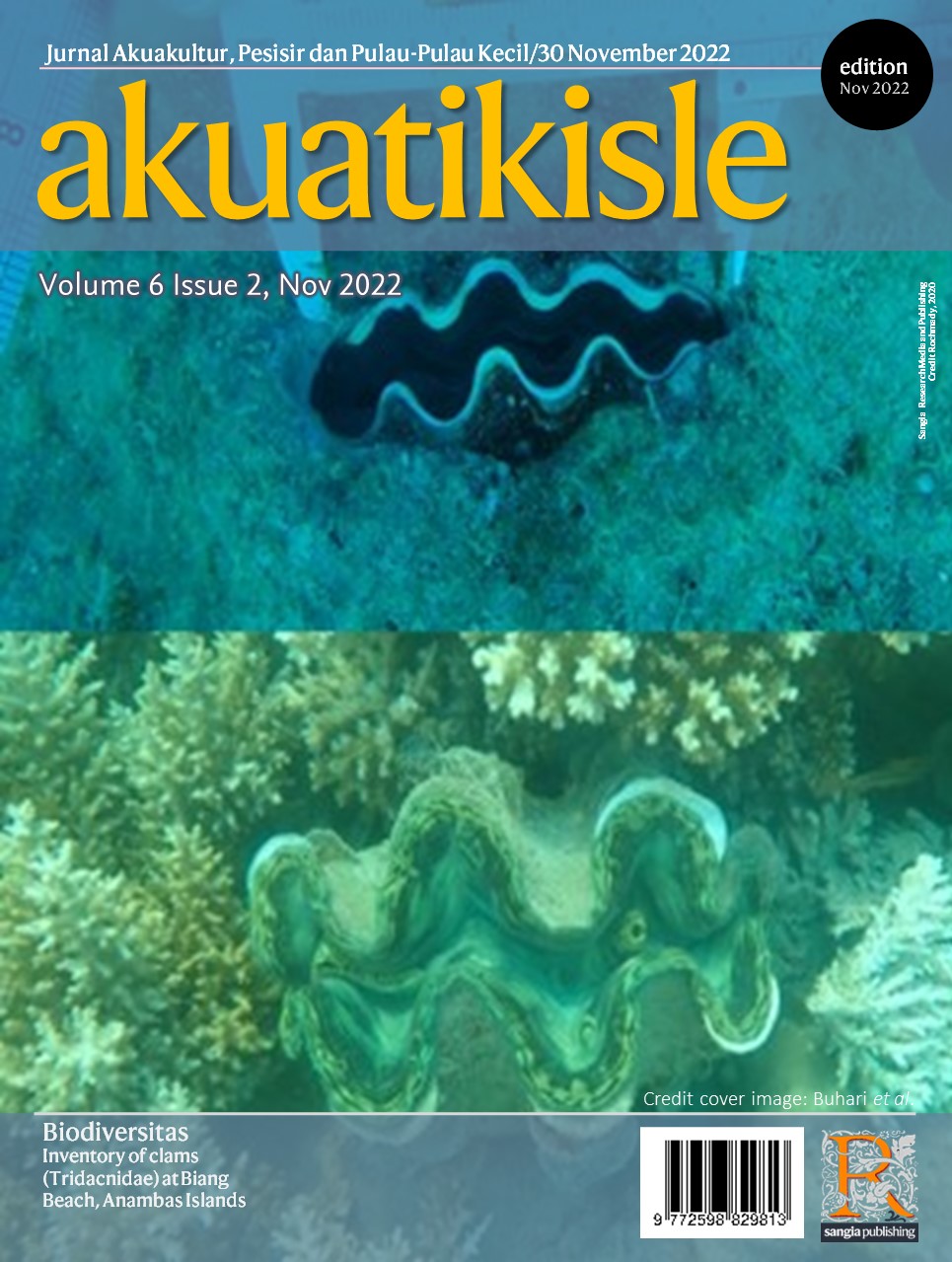Akuatikisle: Jurnal Akuakultur, Pesisir dan Pulau-Pulau Kecil
Full Length Article
Environmental management strategy for coastal waters through a dynamic system approach in Tanjungpinang City region, Riau Islands, Indonesia
Highlights
Generate NLP AI by Wizdam ID.
Abstract
Coastal and small islands are faced with various significant challenges, one of which is the vulnerability to contamination by waste disposal from land and the magnitude of the impact it has on coastal waters. This study presents a framework for formulating environmental management of small island coastal waters from anthropogenic sources of terrestrial land with a system dynamic approach based on the characteristics of physical environmental factors and oceanography of the waters. The purpose of this research is to formulate a strategy for environmental management of the coastal waters of Tanjungpinang City. The results showed that the total magnitude of the waste load originating from anthropogenic sources on the mainland of Tanjungpinang City was 1,073.98 tons/year. The burden of organic waste in Tanjungpinang City is identified from five sources, namely domestic waste from residential areas, hotel and restaurant waste, the food industry, and the agricultural and livestock sectors. The Tanjungpinang coastal waters environmental management strategy with a dynamic system approach is recommended to use an optimistic scenario, but it needs to be supported by several policies in the form of (1) government support to build a community wastewater treatment facility or communal WWTP, (2) increasing community participation and concern for the aquatic environment , and (3) preparing regional strategic plans, specifically in the field of aquatic environmental management in the context of controlling effluent in coastal waters of small islands.
Keywords
Introduction
Section snippets
Material and Methods
Materials and methods from the full-text PDF of this article cannot be displayed.
Results
Results from the full-text PDF of this article cannot be displayed.
Discussion
Discussion from the full-text PDF of this article cannot be displayed.
Conclusions
Conclusions from the full-text PDF of this article cannot be displayed.
Acknowledgment
Acknowledgment from the full-text PDF of this article cannot be displayed.
Competing interest
The authors declare that they have no known competing financial interests or personal relationships that could have appeared to influence the work reported in this paper.
Conflict of interest
The authors declare that the research was conducted in the absence of any commercial or financial relationships that could be construed as a potential conflict of interest.
Ethical approval acknowledgements
No ethical approval required for this article. All procedures followed were in accordance with the ethical standards of the responsible committee on human experimentation (institutional and national) and with the Helsinki Declaration of 1975, as revised in 2008 (5)
Supplementary files
Data sharing not applicable to this article as no datasets were generated or analysed during the current study, and/or contains supplementary material, which is available to authorized users.
Bibliographic Information
Cite this article as:
-
Submitted
1 November 2022 -
Accepted
20 November 2022 -
Published
24 November 2022 -
Version of record
26 December 2022 -
Issue date
30 November 2022
-
Academic subject
Environmental Science
Copyright
Copyright © 2022 Febrianti Lestari. Sangia Research Media and Publishing. Production and hosting by Sangia (SRM™).  This work is licensed under a Creative Commons Attribution-ShareAlike 4.0 International License.
This work is licensed under a Creative Commons Attribution-ShareAlike 4.0 International License.
Disclaimer: All claims expressed in this article are solely those of the authors and do not necessarily represent those of their affiliated organizations, or those of the publisher, the editors and the reviewers. Any product that may be evaluated in this article or claim that may be made by its manufacturer is not guaranteed or endorsed by the publisher.
Comments on this article
By submitting a comment you agree to abide by our Terms and Community Guidelines. If you find something abusive or that does not comply with our terms or guidelines please flag it as inappropriate.



